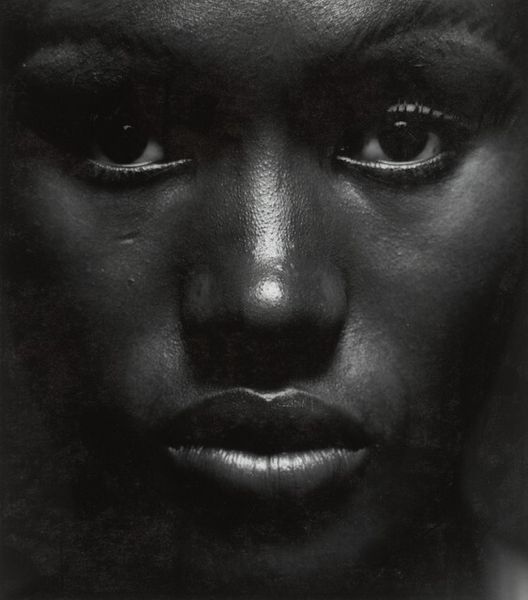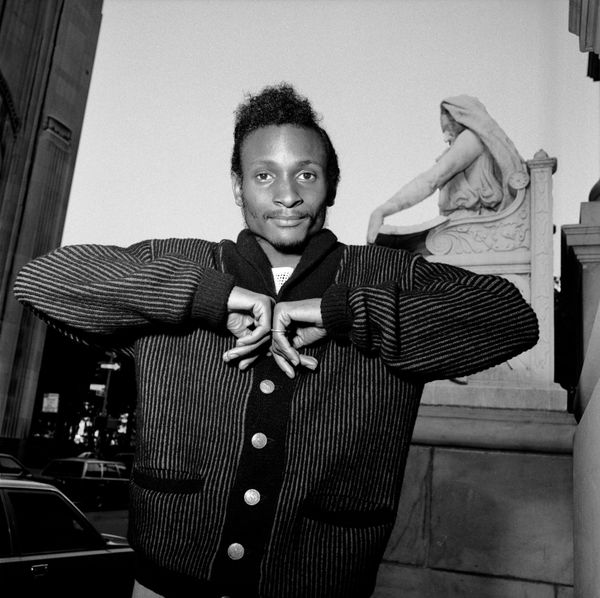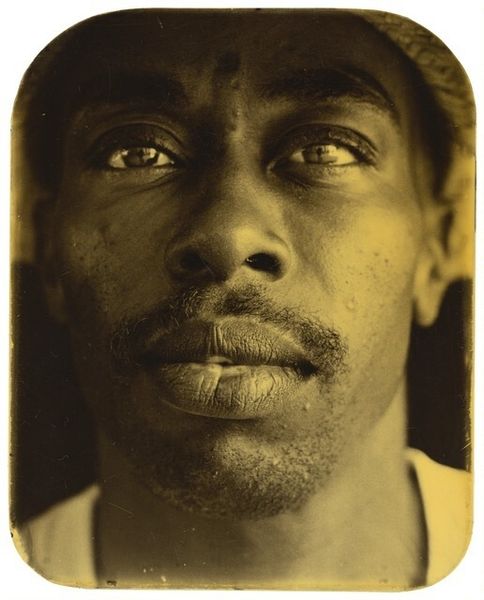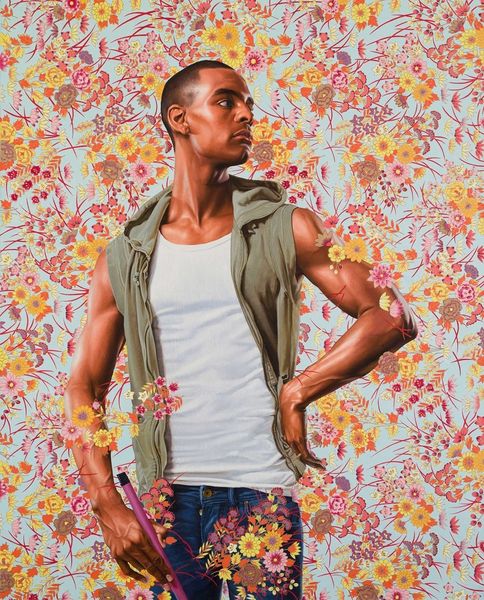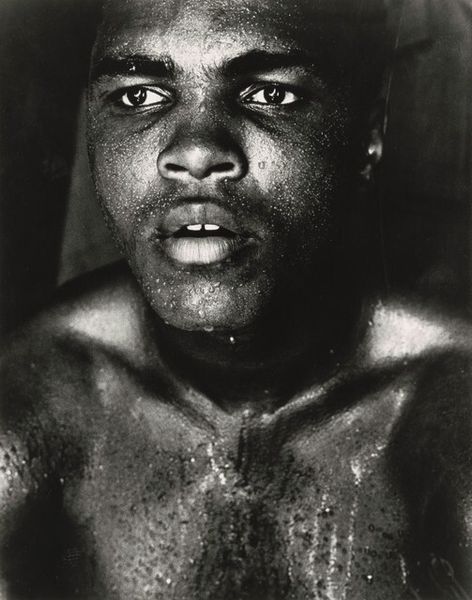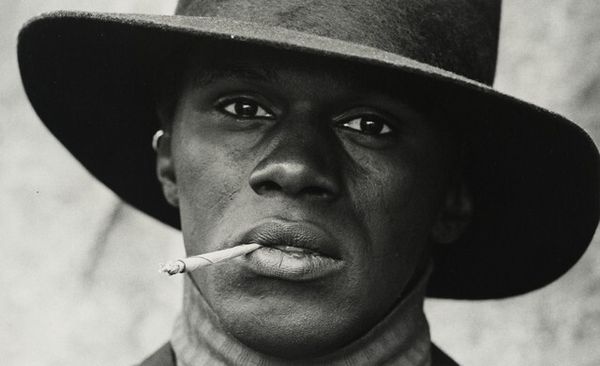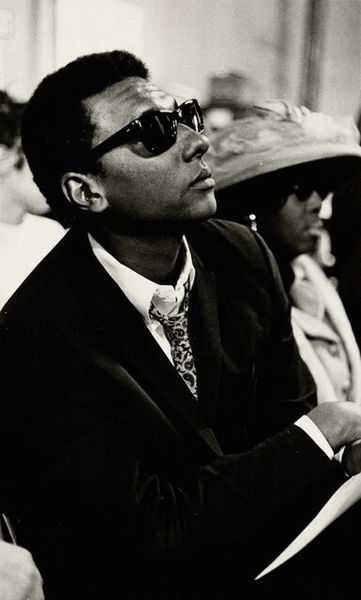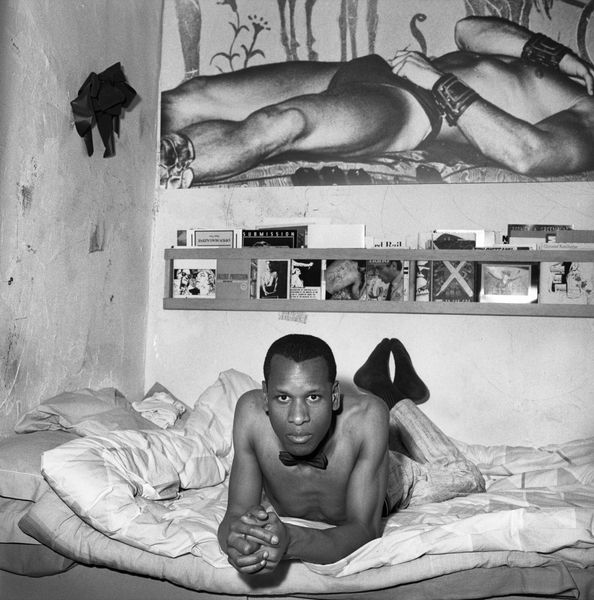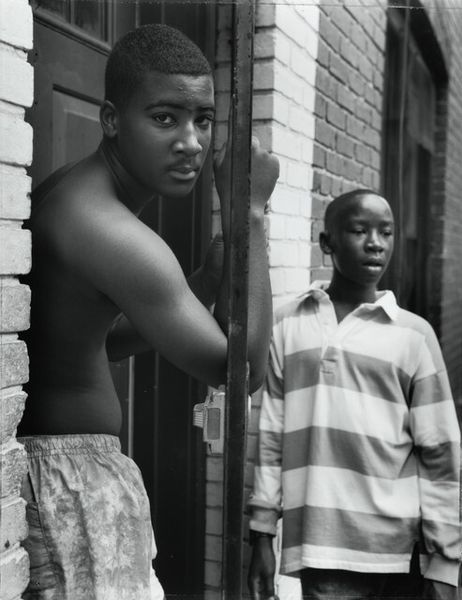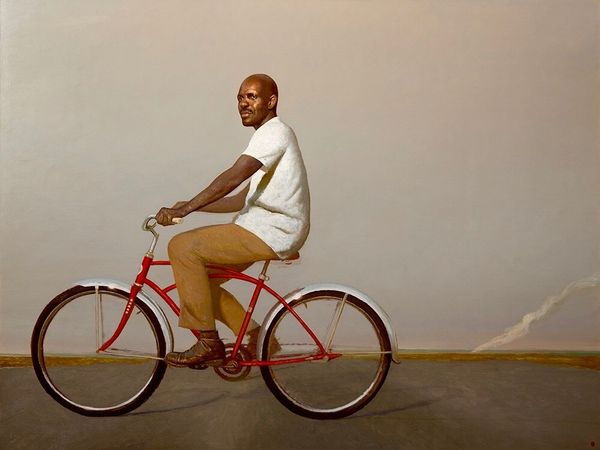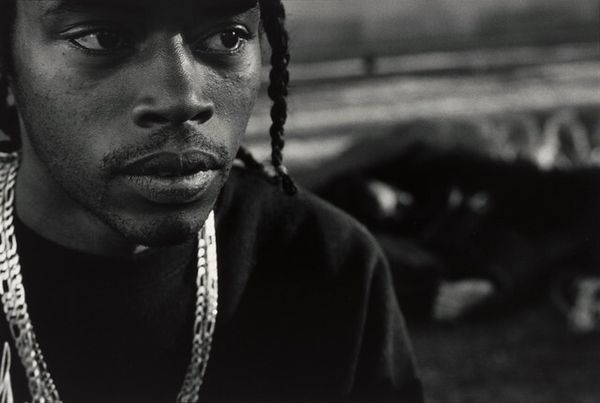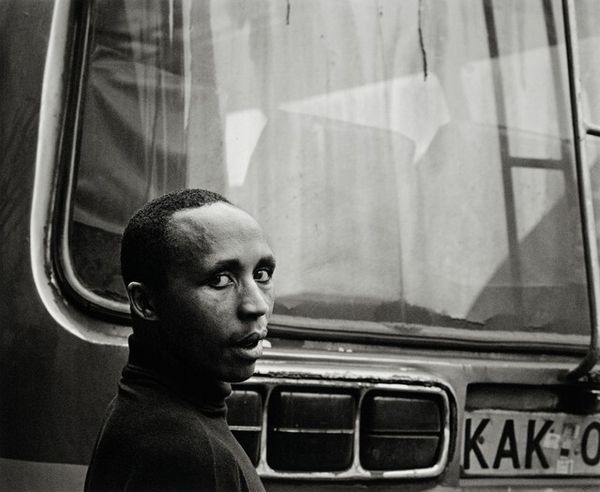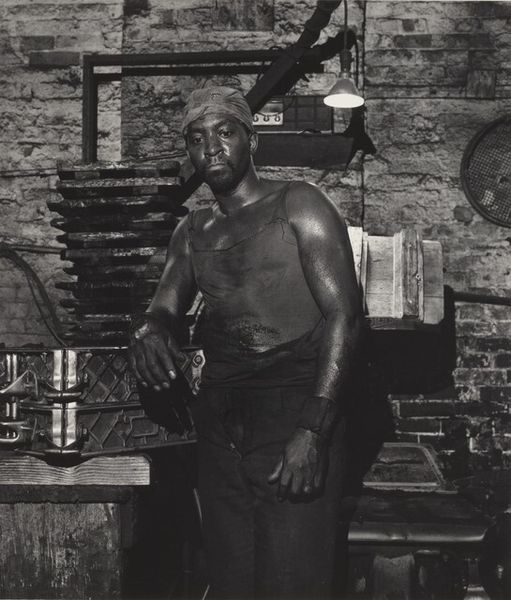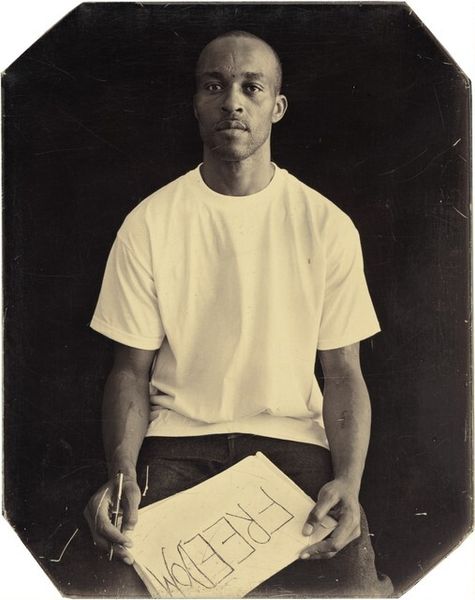
Young Man Resting His Arms on Bicycle, Amityville, New York Possibly 1988 - 2021
Dimensions: image: 77.47 × 101.6 cm (30 1/2 × 40 in.) sheet: 87.63 × 111.76 cm (34 1/2 × 44 in.)
Copyright: National Gallery of Art: CC0 1.0
Curator: Dawoud Bey’s black and white photograph, “Young Man Resting His Arms on Bicycle, Amityville, New York” invites a pause. The date is noted as "possibly 1988-2021"– already suggesting layers of time. Editor: Immediately, I'm struck by the relaxed intensity of the subject. There’s a stillness, almost defiant, that draws me in. Curator: The photograph itself is a gelatin silver print. Consider the darkroom practices and labor involved in creating this print. The monochrome adds a timeless feel, though the details – the tank top, the BMX bike – certainly speak to a specific era. The photograph is a record of the equipment used, the materiality of its moment of production, and how it relates to previous images in the Bey catalogue. Editor: I read the BMX bike here not just as a mode of transportation but as a marker of youth, of a certain kind of freedom or perhaps restricted freedom, for young Black men in Amityville. This image speaks to broader issues of representation, visibility, and the narratives that are often imposed on Black bodies in public spaces. What stories are immediately written when someone views this image? Curator: The light here, and the tones of the image seem carefully composed; and not incidental in its construction. The interplay of light and shadow on his face accentuates his gaze and his confident posture. The means by which a picture is made become increasingly transparent and interesting, in this photograph, for instance. What does it tell you that this print is gelatin silver, and monochrome in tonality? The process matters in thinking about the content. Editor: Absolutely. The black and white medium does a lot of work, too. It strips away distractions, directing the eye straight to the subject’s face, and perhaps it also alludes to the photographic history of documenting Black life – with its own power dynamics. Bey seems to be reclaiming and reshaping those narratives here. How does its materiality relate to other photos taken of Black males at this time, and other photographs of Black men specifically printed in gelatin silver print format? Curator: Reflecting on its potential period of production, and materials offers an interesting way to understand how we read the image. The focus shifts to the active labour and industrial production of the object as its primary site of signification, rather than the model featured within the photograph. Editor: The beauty of this image is the space it creates for these multiple, and perhaps conflicting, interpretations. This image allows us to see and to ask more questions about whose story is being told, by whom, and how we can move toward a more equitable and nuanced visual landscape.
Comments
No comments
Be the first to comment and join the conversation on the ultimate creative platform.
